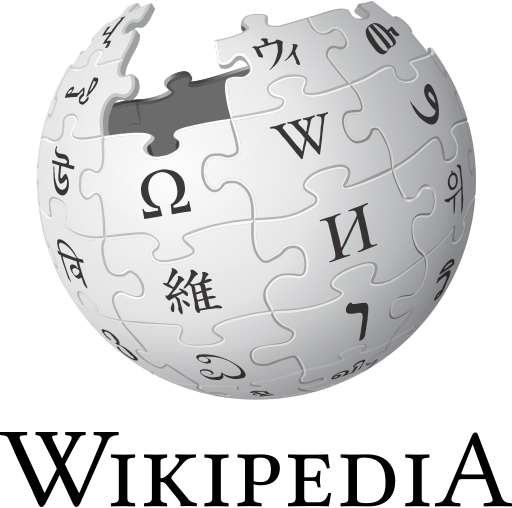CONTENT TYPES
In today’s digital world, content plays a central role in attracting and retaining audience attention. “Content types” encompass various formats and styles, each with its unique features and advantages. It’s important to understand these differences to effectively use content to achieve specific goals. From text articles and blogs to visual and audiovisual content – each type plays its role in marketing and communication strategies. Choosing the right content type can significantly enhance your message and increase audience engagement. Let’s take a closer look at the different content types and their application in the modern media space.
1. Informational Content Types
In today’s world, informational content plays a key role in creating and developing web resources. Properly selected informational content not only attracts audience attention but also serves as an important tool for education and information. Let’s take a closer look at what informational content is and how it’s used in various fields.
- News articles;
- Educational articles and blogs;
- Instructions and guides;
- Reports and analytical articles;
- FAQs and reference materials;
- Reviews and critiques;
- Masterclasses;
- E-books;
Informational content is the type of content whose main task is to provide useful, relevant, and accurate information to the audience.

2. Entertainment Content
Entertainment content is materials created for the amusement and pleasure of the audience. They should be interesting, entertaining, and often humorous. Here are some examples:
- Videos;
- Memes;
- Games and applications;
- Comics and cartoons;
- Podcasts and radio shows;
- GIF animations;
- Riddles and puzzles;
- Jokes;
Entertainment content is widely used to attract attention on social media and websites. It helps to relieve tension, bring a smile, and create positive associations with your brand. This type of content is perfect for creating a light and relaxed atmosphere. It helps to retain the audience and increase engagement. Entertainment content often goes viral, helping to expand brand reach and recognition. It’s important to select this content considering the interests and preferences of your target audience, so it can be effective and achieve the desired result.
3. Sales Content
Sales content is a type of content designed to boost sales. It must be convincing, informative, and directly tailored to meet customer needs. Here are some examples of how to use sales content:
- Descriptions of products and services;
- Landing pages;
- Promotional text;
- Email newsletters;
- Social media content;
- Video reviews and demonstrations;
- Commercial proposals;
Sales content should be clear and easy to understand. It needs to focus on solving customer problems and needs. Highlight how your product or service can improve the customer’s life or solve their problems. Effective sales content not only informs but also triggers an emotional response that encourages action. It should be targeted to your audience, addressing their questions and doubts. Sales content can be integrated into various formats and platforms, reaching a wide range of potential customers and enhancing the effectiveness of marketing campaigns.

4. Engaging Content
Engaging content is a type of content that can’t be ignored. It actively captures the audience’s attention and encourages interaction. It should be interesting, dynamic, and motivate the audience to participate. Here are examples of engaging content:
- Surveys and polls;
- Interactive quizzes;
- Comments and discussions;
- Live streams;
- Gamification elements;
- Captivating stories and narratives;
- Interactive infographics;
Engaging content must be crafted to spark interest in the audience and stimulate them to take action. It allows for deeper interaction between the brand and the audience. Engaging content also helps retain audience attention and increase the time spent on a website or social media page.
Using engaging content in your marketing strategy helps strengthen relationships with your audience and increases engagement levels. This is key to building a loyal audience, expanding your subscriber base, and enhancing the overall effectiveness of marketing campaigns.
5. Viral Content
Viral content is the kind that quickly spreads online. It grabs attention and evokes strong emotions from the audience. The aim of viral content is to get maximum views and shares. Here are some examples of content that becomes viral:
- Videos from YouTube, Instagram, and TikTok;
- Quizzes (especially those with sharable results);
- Memes;
- Newsletters with giveaways;
- Articles with catchy titles or life hacks;
Viral content needs to be original and memorable. It often includes humor, surprise, or emotional impact. The key is to make people want to share this content with others. Viral content helps increase audience reach and brand recognition. It can be used to enhance engagement and interaction with the audience. Viral content is often utilized in marketing campaigns to draw attention to a product or service. It can create widespread public buzz and become a topic of discussion in the media and among internet users.
VARIETIES BY CONTENT TYPE
1. Text Content
Text content includes the words and phrases we see on websites, in blogs, and articles. It informs, educates, entertains, or persuades the reader. Here are some places where text content plays a key role:
Websites: On a company’s homepage, the text introduces the brand and talks about its services. Clear and convincing content attracts visitors’ attention.
Blogs: Here, text content is used to educate or inform readers about various topics. Well-written blogs can increase website traffic and improve SEO.
Social Networks: Short and engaging texts in posts are important for attracting attention and engaging the audience.
Marketing Materials: In promotional brochures and emails, text content is used to market products or services.
Technical Documents: Instructions and user guides consist of text content that explains how to use a product or service.
News Articles: They inform readers about the latest events and news. Clear and accurate text is important for reliable information dissemination.
Quality text content is written by a copywriter. It should be interesting, easy to read, and provide valuable information. Such text not only keeps the audience’s attention but also helps promote the site in search engines.
2. Visual Content
Visual content includes images, videos, graphics, and infographics that convey information more vividly and effectively. It captures attention and is more easily absorbed by the audience. Here are some examples of visual content usage:
Social Networks: On Instagram or Facebook, beautiful photos or fun videos grab attention and increase user engagement.
Websites: High-quality images and videos on the homepage make it more attractive and understandable to visitors.
Advertising Campaigns: Eye-catching banners and engaging videos help draw attention to a product or service and increase conversion rates.
Educational Materials: In educational videos and infographics, visual content helps explain complex ideas clearly and accessibly.
Presentations: Visual elements make presentations more interesting and help the audience better absorb information.
E-mail Marketing: Illustrations and photos in emails make them more appealing and increase the likelihood of being read.

Visual content plays a key role in modern marketing. It not only makes information more appealing but also aids in better understanding and memory retention. Quality visual content enhances brand recognition and strengthens its market position.
3. Video Content
Video content is one of the most popular and effective types of content in digital marketing. It encompasses everything related to video materials, from short clips to lengthy instructional videos. Here are some ways video content is used:
Social Networks: On TikTok, Instagram, or YouTube, videos are used to attract attention, increase engagement, and expand the audience.
Corporate Websites: Embedding video presentations about a company or product helps website visitors quickly get the information they need.
Educational Platforms: Video courses and webinars are key tools for teaching and knowledge transfer.
Advertising Campaigns: Online and TV commercials attract attention to the brand and stimulate sales.
Vlogs: Video blogs on YouTube or other platforms allow sharing experiences, opinions, and knowledge with a wide audience.
Live Streams: Live broadcasts on various platforms are used for direct interaction with the audience, discussing current topics, and demonstrating products in real time.
Video content is a powerful tool for attracting and retaining audience attention. It can convey more information in less time compared to text or images. Videos help better communicate emotions and atmosphere, making the message more convincing and memorable. This type of content is particularly effective for product demonstrations, education, storytelling, or creating an emotional connection with the audience.
4. Audio Content
Audio content is a type of content that encompasses everything related to sound. This includes podcasts, audiobooks, music tracks, or sound effects. Here are some ways audio content is used:
Podcasts: They’re popular for discussing various topics, from business to entertainment. Podcasts are used to grab the audience’s attention and connect with them.
Audiobooks: A convenient way to “read” books while driving or working out. Audiobooks are becoming increasingly popular in many countries.
Music Tracks: Used in advertising, movies, video games, and on the radio. Music sets the mood and enhances emotional response.
Instructions and Guides: In audio format, they help users understand products or services when watching videos is not possible.
Sound Effects: Used in video games, movies, and applications to create a realistic and immersive atmosphere.
Virtual Assistants and Voice Commands: Becoming more in demand in smart devices and applications.
Audio content is important because it offers convenience and accessibility to users. It allows consumers to receive information or enjoy content without being distracted from other activities. Audio content, especially in the form of podcasts, allows for building long-term relationships with the audience, as listeners often perceive it as more personal and direct communication. This type of content is perfect for multitasking and can be listened to anywhere, anytime, making it particularly convenient for the modern lifestyle.
5. Interactive Content
Interactive content is a type of content that engages users in active interaction. It’s different from traditional content because it requires audience participation, not just their attention. Here are some examples of interactive content:
Surveys and Polls: Used on websites and social media to gather user opinions and preferences. They help to understand the audience’s views and increase engagement.
Interactive Quizzes: Popular in educational resources and marketing campaigns. Quizzes boost interest and aid in learning new information.
Games: Used in marketing and education. Games are engaging and can convey educational or promotional content in an entertaining way.
Interactive Infographics: Allow users to interact with data, for example, by hovering over or clicking on elements to get more information.
Virtual Tours: Used in tourism and real estate. They allow users to virtually explore places, increasing interest and providing a unique experience.
Calculators and Tools: Like mortgage calculators on banking websites. They help users get personalized information based on their data input.

Interactive content significantly increases audience engagement and interest. It helps people understand and remember information better. It also strengthens the connection between a brand and its consumers. Interactive elements make content more noticeable and memorable, which is crucial in an information-saturated environment. This type of content also helps gather data on user behavior and preferences. This can be used to improve marketing strategies and personalize offers.
6. Social Media Content Types
CONTENT TYPES: CONCLUSION
Now you know the main types of content and their importance in the digital world. You understand that each type of content has its unique features and uses. From text and visual to audio and video content – each format can enhance your message and attract an audience. You’ve learned how promotional content can increase sales, how informational content aids in educating your audience, and how viral content can spread on social networks. With this knowledge, you can approach content creation more consciously, choosing the right types for your goals and audience. This will help you not only to draw attention to your brand but also to build strong, long-term interaction with your target audience.

















